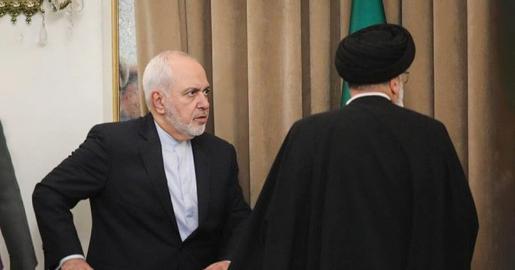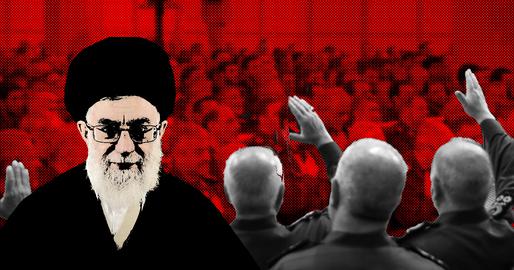Politicians, journalists, human rights activists and religious leaders alike warned Saudi Arabia that the execution of Shiite cleric Nimr al-Nimr and 46 other people charged with different “terrorist acts” would cause a dangerous backlash across the Middle East. By killing the cleric, the fear was that it would worsen already tense sectarian divisions between Sunnis and Shias, divisions that have been growing in the region for some time. Despite the warnings, Al-Nimr was beheaded, as is customary in Saudi Arabia, on Saturday, January 2. But just several days later, it seems that their fears were justified.
“Despite appeals from many corners, the Saudis went ahead with the execution,” says Bahraini activist Dr. Saeed Shehabi. “And for Shia Muslims in both Saudi Arabia’s Eastern Province and Bahrain and elsewhere, this represents a massive snub. Shias are now mourning him and holding protests in recognition of his support.”
The execution sent angry ripples across Shia communities the world over and sparked protests in Saudi Arabia, particularly in the Eastern Province, in Bahrain, Iraq, Iran and elsewhere. In Iran, angry protesters stormed and set alight to the Saudi Embassy in Tehran and the consulate in Mashhad. In response, the Saudis called back their envoy(s) in Iran and ceased all diplomatic ties with the Shiite country. But that was not the end.
Shortly thereafter, Bahrain, followed by Sudan and the United Arab Emirates — all Sunni-ruled countries closely allied to Saudi Arabia — pledged their allegiance to the Wahhabi powerhouse by cutting or reducing diplomatic relations with Iran. The catalyst: Al-Nimr’s execution.
So who was Al-Nimr? Why did his execution cause such a widespread backlash? Was he the dangerous terrorist the Saudi regime portrayed him to be, or was he a peaceful leader who gave hope to disenfranchised Shias living in Saudi Arabia and Bahrain? Or a mixture of the two?
The Early Days
Today, for most of the world’s Shiites, cleric Nimr Al-Nimr is a household name and has been for some time. But this was not always the case. For a long time, Al-Nimr was a little known figure outside of his hometown of Awamiya, a poor Shia village, outside of Qatif, the largest Shia city in Saudi Arabia.
Nimr Al-Nimr (Nimr means “tiger” in Arabic) was born in 1959 to a prominent family from Awamiya, a village long associated with resistance to the Saudi monarchy, the Al-Saud family. However, it was not until the late 1970s that Al-Nimr became politicized, after the 1979 Islamic Revolution of Iran inspired a Shiite uprising in his village. The Shirazi movement, which Al-Nimr swiftly joined, started the uprising in Awamiya. Later, he enrolled in the movement’s religious school in Iran, known as a hawza, where he later became a teacher. He remained in Iran for several years.
According to Toby Matthiesen, a Senior Research Fellow in International Relations of the Middle East at Oxford University and author of Sectarian Gulf: Bahrain, Saudi Arabia and The Arab Spring That Wasn’t, the Shirazi movement was a “transnational Shiite political organization led by Iraqi-Iranian cleric Muhammad Mahdi al-Shirazi” with Shiite supporters predominantly in Saudi Arabia, Bahrain and Kuwait. The movement has been accused of extremism in the past.
Its leader, al-Shirazi, played a significant role in the early days of the Iranian revolution. He was also a spiritual guide for the Movement of Vanguard Missionaries, an umbrella group for Iran-based Islamist paramilitaries in the 1980s.
“Al-Nimr was never popular with Sunnis or the Shia elite [in Saudi Arabia] and that’s because they didn’t like his approach. By this I mean, he was part of the Shirazi movement for some time,” explains Matthiesen. “But the movement has got many different branches so it can’t be classified as extremist or not extremist.”
When asked about the Shirazi movement and Al-Nimr’s execution, both a human rights activist from Saudi Arabia and an activist from Bahrain declined to comment; both were fearful that there would be repercussions from their respective governments.
However, Sarah Y.BN Ashoor, an advisor to the Bahraini government, refutes the idea that the Shirazi movement was ever peaceful. According to Ashoor, Shirazi followers and those belonging to the more radical elements of the Shia opposition spectrum, including cleric Al-Nimr, are no better than Al Qaeda or Daesh [Islamic State or ISIS].
“Essentially, he was an extremist cleric and openly called for the militant overthrow of the Gulf monarchies. If you go on YouTube, there is nothing peaceful about him or his inciting sermons,” says Ashoor. “More importantly, Al-Nimr was the godfather of militant cells that mobilize and train young Gulf youth to carry out fatal attacks upon instruction against innocents in Saudi as well as Bahrain."
Although the exact date is unclear, cleric Al-Nimr left the Shirazi movement some years later. According to a 2008 Wikileaks report, the sheikh at that time was no longer “directly affiliated with either the Shirazis or Saudi Hizbollah, the two largest political blocs in the Eastern Province” and was instead under the the leadership of someone else. This time — the late 2000s — was also the point at which Al-Nimr began to build a reputation as the most vocal Shiite critic of the Saudi dynasty.
“Today, he’s quite an important figure for Shiites but that didn’t happen overnight,” says Matthiesen.” That only became the case after the [Arab Spring] protests of 2011, his arrest in 2012 and of course, his execution. By the time he died though, he was the most popular cleric in his village, which has about 40,000 people, and the surrounding villages.”
In 2009, Al-Nimr angered Saudi authorities by calling for the Eastern Province to secede from Saudi Arabia and unite with neighboring Shia-majority Bahrain. He was also the only Saudi Shiite cleric to unanimously support both the protests in Bahrain and those across the Eastern Province, something that quickly made him popular among the younger Shiite generations.
Then in mid-2012, security forces arrested and shot the cleric after a video was released online of him celebrating the death of interior minister Prince Nayef bin Abdulaziz. His treatment at the hands of government forces sparked several days of protest in the Eastern Province. Al-Nimr was charged with a number of terrorist offences, including “disobeying the ruler” and “encouraging, leading and participating in demonstrations.”
According to Adhan Alahmari, a news reporter at the unofficial Saudi newspaper Al Sharq Awsaat, sheikh Al-Nimr was guilty of all the crimes for which he was executed.
“The Saudi Interior Ministry was very clear about the terrorist acts he committed.,” says Alahmari. “He was accused of encouraging young people to carry out attacks against the authorities. He also colluded with terrorists. He was not the peaceful guy he’s so often portrayed to have been.”
Newspaper Al Sharq Awsaat, which Alahmari writes for, takes the same line. According to daily news reports, Al-Nimr committed many terrorist acts, including the bombing of the Muhaya Compound and planning to assassinate the Minister of Interior, the late Nayef bin Abdulaziz, by “poisoning him with fatal air conditioner air.” According to the paper, he was also “part of the group that transferred explosive materials from Riyadh to Mecca so Al-Qaeda members could use them in terrorist operations.”
But Matthiesen strongly contests the stance of the Saudi authorities and press. According to him, the Saudi ruling family and their families felt threatened by Al-Nimr’s popularity among Shia groups and the fact he called for revolution in Saudi Arabia.
“He was convicted for his political views. There’s no other way of putting it. And all they mean by terrorism is giving speeches to protesters,” says Matthiesen. “Really, they executed him because he called for the overthrow of the Al-Saud family and this was, allegedly, advocating violence so he had to be put to death. But he’s an old man, there’s no way he went out and shot a policeman or did whatever else he was accused of. “
He adds, “Martyrdom is a very important feature of Shiism and that’s exactly what he’ll become now that he’s been executed: a classic martyr figure for Shias around the world.”
Related articles:
Does Sectarianism Explain the Iran-Saudi Split?
Iranian Government is Legally Responsible for Embassy Attack
The Story behind the State-Sponsored "Spontaneous" Torching of the Saudi Embassy
Caught In the Crossfire: Bahrain & Iran-Saudi Rivalry
Bahrain Follows Saudi Arabia and Severs Ties with Iran
Hardliners Attack “Weak, Extremist” Saudi Arabia and Lash out at “Disloyal” Rouhani
visit the accountability section
In this section of Iran Wire, you can contact the officials and launch your campaign for various problems



























comments